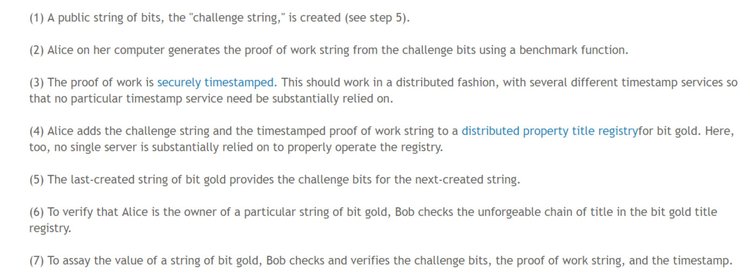Nick Szabo is a computer scientist, legal scholar, and cryptographer who coined the term “smart contract” and theorized Bit Gold.
He holds a degree in Computer Science from the University of Washington. As well as Juris Doctor degree from George Washington University of law. He is an honorary professor at the Universidad Francisco Marroquín.
Nick is, in fact, a major indirect contributor to bitcoin technology. His Bit Gold concept of decentralized digital currency is a precursor of the bitcoin architecture. Although Szabo has repeatedly denied it, many believe he is actually the bitcoin founder Satoshi Nakamoto.
Very little is known about where Szabo lives, where he comes from or how old he is. Nothing is known about him, except his thoughts on the world of technology and finance.
Smart Contracts
Nick Szabo defined smart contracts 14 years before bitcoin. He first really emerged in the crypto lore with his 1996 publication of “Smart Contracts: Building Blocks for Digital Free Markets” in Extropy.
Szabo defined a contract as “a set of promises agreed to in a meeting of the minds, which is the traditional way to formalize a relationship,” and wrote that:
“The basic idea of smart contracts is that many kinds of contractual clauses (such as liens, bonding, delineation of property rights, etc.) can be embedded in the hardware and software we deal with, in such a way as to make a breach of contract expensive for the breacher.”
Szabo predicted that the digital revolution would drastically change the way humans make contracts, and he questioned even then whether our traditional contracts would continue to have a use in the cyberspace era.
Szabo then said that smart contracts would improve execution of the four basic contract objectives, which he described as observability, verifiability, privity, and enforceability.
Smart contracts gained popularity with the introduction of ethereum, which uses the Solidity language to program the contracts.
Bit Gold
In 1998, Szabo theorized Bit Gold, a way to convert bits and computing power into something of storable value.
Bit Gold was inspired by inefficiencies of the traditional financial system and the use of precious metals as currency.
“It would be very nice if there were a protocol whereby unforgeable costly bits could be created online with minimal dependence on trusted third parties, and then securely stored, transferred, and assayed with similar minimal trust. Bit gold,” Szabo wrote in his paper on Bit Gold.
Szabo conceived Bit Gold as a form of reserve currency which was created by participants performing a proof-of-work function on computer hardware.
Below are the main steps of the Bit Gold system that he outlined:
He elaborated on the proposal in a December 2008 blog entry, copied from a paper he wrote in 2005. A month later Satoshi Nakamoto would release bitcoin’s source code on SourceForge and mine the first bitcoin.
Although the Bit Gold project was never implemented, it was one of the earliest attempts at creating a decentralized digital currency, which became the direct precursor to Satoshi Nakamoto’s bitcoin protocol.
Bitcoin and Bit Gold
There are many similarities between bitcoin’s architecture and the Bit Gold proposal, particularly in the technical mechanisms used to process transactions and secure the decentralized network, according to CoinCentral.
Both bitcoin and Bit Gold are powered by a PoW-based consensus algorithm in which computing power is spent to solve cryptographic puzzles. The solution to those puzzles is then processed through a Byzantine Fault Tolerant (BFT) peer-to-peer network.
A cryptographic hash chain is created to link the most recent puzzle’s solution to the outcome of the following one, thereby validating blocks of transactions. This process for posting transactions to the network is consistent between bitcoin and Bit Gold.
Szaboshi Nickamoto
Mr. Szabo is nearly as much of a mystery as Satoshi, and he has often been poised to be the bitcoin creator. Some have even uncovered a possible numerary correlation between the name Satoshi Nakamoto and Nick Szabo and believe it’s no coincidence.
The New York Times also suggested that Nick Szabo was probably bitcoin founder Satoshi Nakamoto, although he has repeatedly denied the claims.
@socrates1024 Not Satoshi, but thank you.
— Nick Szabo (@NickSzabo4) July 7, 2014
A researcher analyzed the writing style of both Nick and Satoshi and declared Szabo as the number one candidate to be Satoshi. Skye Grey posted a detailed analysis of textual biases in the writing of pseudonymous bitcoin creator Satoshi Nakamoto and a researcher named Nick Szabo at George Washington University.
A report on Medium draws further parallels between Szabo and Satoshi. According to the report, "Szabo and Satoshi each give essentially an identically unique explanation" as to why Bitcoin should have value.



